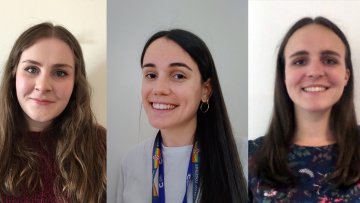Characterising the statistical properties of high dimensional random functions has been one of the central focus of the theory of disordered systems, and notably spin glasses, over the last decades. Applications to machine learning via deep neural network has seen a resurgence of interest towards this problem in recent years. The simplest yet non-trivial quantity to characterise these landscapes is the annealed total complexity, i.e. the rate of exponential growth of the average number of stationary points (or equilibria) with the dimension of the underlying space. A paradigmatic model for such random landscape in the $N$-dimensional Euclidean space consists of an isotropic harmonic confinement and a Gaussian random function, with rotationally and translationally invariant covariance [1]. The total annealed complexity in this model has been shown to display a ”topology trivialisation transition”: for weak confinement, the number of stationary points is exponentially large (positive complexity) while for strong confinement there is typically a single stationary point (zero complexity).
In this talk, I will present recent results obtained for a distinct exactly solvable model of random lanscape in the $N$-dimensional Euclidean space where the random Gaussian function is replaced by a superposition of $M > N$ random plane waves [2]. In this model, we compute the total annealed complexity in the limit $N\rightarrow\infty$ with $\alpha = M/N$ fixed and find, in contrast to the scenario exposed above, that the complexity remains strictly positive for any finite value of the confinement strength. Hence, there is no ”topology trivialisation transition” for this model, which seems to be a representative of a distinct class of universality.
References:
[1] Y. V. Fyodorov, Complexity of Random Energy Landscapes, Glass Transition, and Absolute Value of the Spectral Determinant of Random Matrices, Phys. Rev. Lett. 92, 240601 (2004) Erratum: Phys. Rev. Lett. 93, 149901(E) (2004).
[2] B. Lacroix-A-Chez-Toine, S. Belga-Fedeli, Y. V. Fyodorov, Superposition of Random Plane Waves in High Spatial Dimensions: Random Matrix Approach to Landscape Complexity, arXiv preprint arXiv:2202.03815, submitted to J. Math. Phys.


